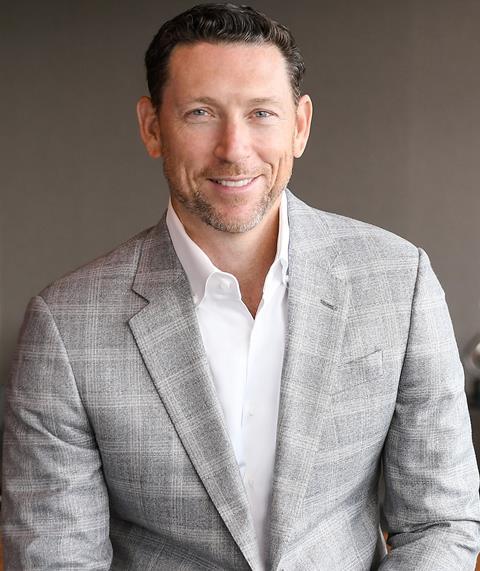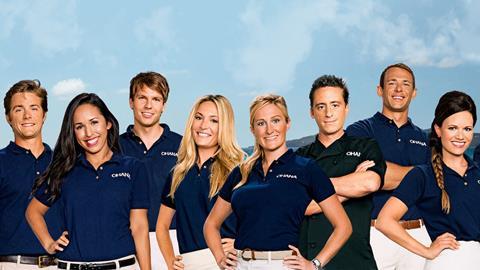Banijay Americas chief exec Ben Samek on why partnerships rather than M&A lie at the heart of his growth plan in the US and LatAm
Banijay Americas is betting on creative partnerships to grow its business, influenced by the complex world of IP ownership that hampers conventional M&A, as chief exec Ben Samek explains.
The division spans two continents, including the behemoth that is the US market, but only has presence in three countries (with Mexico and Brazil sitting alongside the US).

However, unlike the intense recent M&A activity among the super-indies in Europe, the world’s largest is looking more at backing individual talent in the westernmost continents and inter-company collaboration.
Besides setting up with Desperate Housewives and Only Murders in the Building actor Eva Longoria and its former chief Cris Abrego to launch Hyphenate Media Group, Banijay Americas recently partnered with Netflix alum Dan Silver for factual outfit BD4.
“We’ve tried to be incredibly strategic in our structure. The companies we have in place right now are all there for a very specific reason,” Samek tells Broadcast International.
“Deals like BD4, where we find individual creative talents who we believe we can empower, help provide funding, services, and bring them into the market and to grow a label in a cost-effective way [are attractive]. We didn’t have a premium doc company, and I didn’t have a creative that I really felt had an approach in the market, so we launched BD4.
“I wouldn’t go and acquire another scripted label in Brazil, I would just lean into growing A Fábrica and figure out how to do that. Mexico is the same way.”
The last comment turns out to be foreshadowing – shortly after Samek’s conversation with Broadcast, Banijay Americas unveiled plans for two of its companies, A Fábrica and Like Water for Chocolate producer Endemol Shine Boomdog, to launch a Spanish-language scripted outfit, based out of Mexico City.
The new label, A Fábrica Mexico & U.S. Hispanic, will focus on developing and producing original scripted shows and will be led by A Fábrica chief executive Luiz Noronha.
“I believe in utilising production services where appropriate,” Samek continues. ”I believe in having shared services where appropriate, but I think I’ll do many more of those [BD4] types of deals than I will the traditional M&A route. Especially in the US, where there’s not a lot of IP.”
Samek acknowledges that “if there was more IP to be had” in the States, “we would continue to bet and invest there” in M&A, but generating IP through backing talent is the order of the day.

Major exec moves over the past two years in the region have underscored this intent. Ripley outfit Endemol Shine North America, previously a holding company for Banijay Americas, was given autonomy to run as an independent studio with Sharon Levy upped to chief exec to overseeing all business and growth.
Bunim/Murray president Julie Pizzi, like Levy another key creative leader within the Banijay Entertainment global family, was subsequently handed oversight for sibling indie 51 Minds, producer of hit Bravo franchise Below Deck.
As well as the brash boating reality format, together the two labels marshal some of the biggest titles on TV in the US, including The Summit, Deal or No Deal Island, The Challenge, MasterChef, Lego Masters and Keeping up with the Kardashians.
“We have great partners, great IP, great franchises. This is a way to leverage our size and scale and our expertise and back creatives,” Samek adds.
With Content Americas kicking off in earnest yesterday, the focus has turned to the US, central America and LatAm territories, with the global industry looking to put the turbulence of the past two years behind it and pick up the pieces of a global commissioning pull-back so keenly felt in 2024.
That the market is “trying to find its way and balance” is not lost on Samek, but he warns that “dwelling on the negativity is not helpful” and the evolving streaming world, now looking to revenue and profitability growth, will necessitate a shift in buyers’ stance on thorny issues like IP and rights.
“You have to continue to adjust to the market and part of it is we only control what we can control,” he says. “We’re a content producer and at times it’s freeing and frustrating because we are at the mercy – at times – of all the platforms, toggling their strategy.
“But I believe there will be more flexibility in windowing and in ownership in the coming years. Cable will need to adjust itself a bit and I believe in the streamers. There will be some consolidation, saying there won’t be would be naive.
“My bet is when there is more stability, there will be more thriving ecosystem.”
Additive ad tiers
This bullishness stems from his expectation the streamers will wholeheartedly lean into their burgeoning ad tiers. Recent data from Ampere Analysis suggests subscription streaming will generate an additional $22bn (£18bn) from ad sales in the next five years, as the historic SVoD giants pivot to ad-supported tiers.
“I believe in the ad tiers as a growth strategy, there’s too much inventory right now,” he predicts. “Netflix is clearly launching [in that space], Amazon is clearly launching. I had a conversation with Globo and how they’re focused on [ad tiers] in Brazil and really building the market down there.

“The relationship between brands and content have always been a huge part of why you have broadcast TV, and the big trusted production companies who have those long-standing broadcaster relationships and a proven track record of producing content that works for brands and larger-scale audiences [will thrive].
“Companies like ours who are reimagining what broadcast TV is [will win business], whether it’s with our IP or not.”
His last line rings loudly. Samek, Banijay and the global industry know that “betting on IP” shows no sign of diminishing and “formats are really valuable”, but it should not be the prerequisite.
“Louder content is helpful in bringing in an audience and advertisers will gravitate more towards those multi-generational viewing, formatted, big IP shows with big talent attachments,” he says. “But you need to have a bigger offering, you still need the Baby Reindeers and Below Decks of this world [that suddenly explode].
“As soon as we stop betting on creativity, stop thinking we can bring those next big hit shows out to the market, then I think: why are we even in the business?”








No comments yet